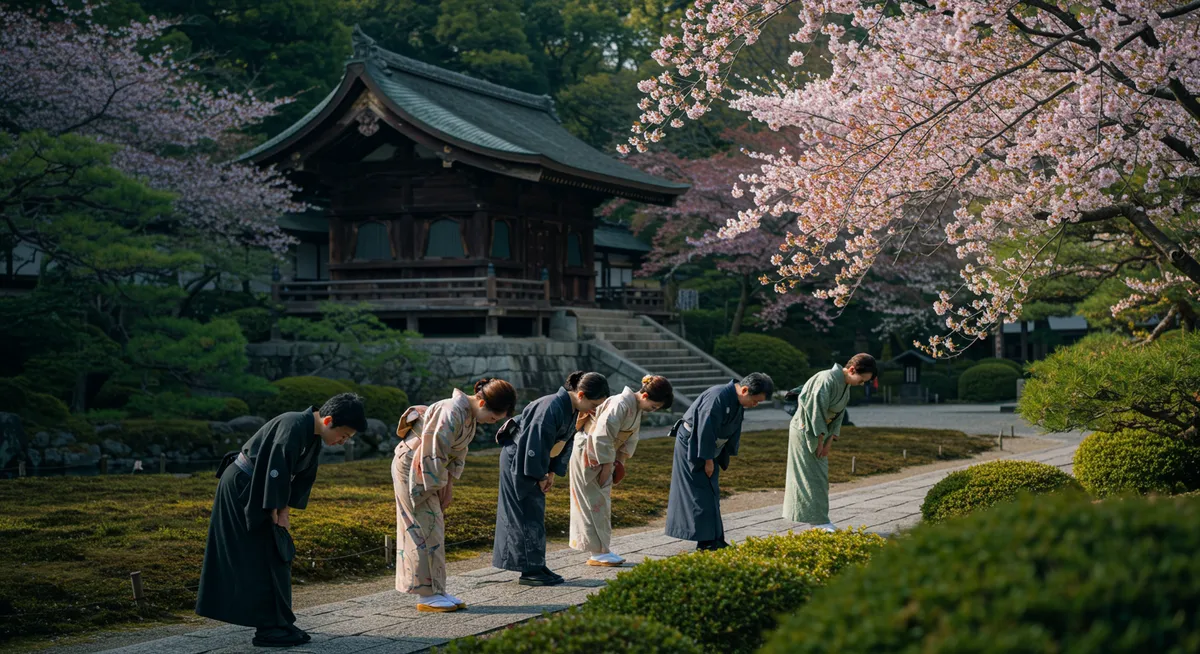
Kyoto Cultural Etiquette & Customs Guide
Table of Contents
Want to find the best travel deals for this destination? Chat with our travel hacking specialist!
Get Travel HacksCategory: kyoto-cultural-etiquette-and-customs
Mastering Kyoto's Cultural Etiquette and Customs
Having spent considerable time exploring Japan, particularly its ancient capital, I’ve learned that embracing local traditions significantly enriches the travel experience. Kyoto, with its rich history and deep-rooted customs, offers a unique opportunity to immerse yourself in Japanese culture. Understanding Kyoto cultural etiquette and customs isn't just about avoiding faux pas; it's about showing respect and fostering genuine connections during your visit.
Respect at Temples and Shrines
When visiting Kyoto’s revered temples and shrines, a deep sense of respect is paramount. Always remove your shoes before entering temple halls or traditional Japanese homes, placing them neatly at the entrance. It's also customary to observe silence or speak in hushed tones, especially during prayer times. From my personal experience, it's vital to refrain from taking photos during religious ceremonies, as this can be incredibly disruptive. Adhering to these unwritten rules for Kyoto cultural etiquette and customs shows appreciation for Japan's spiritual heritage, ensuring a harmonious visit for everyone. Remember to purify your hands and mouth at the temizuya before entering the main grounds.
Dining and Shopping Protocol
Dining in Kyoto is a delightful experience, but it comes with its own set of Japanese manners. When eating, it's generally considered polite to slurp noodles, as it signifies enjoyment, but avoid leaving food uneaten, as it's wasteful. Chopstick etiquette is crucial; never stick them upright in your rice bowl, as this resembles funeral rituals. In shops, always accept change and purchases with both hands. Understanding these local customs in Kyoto will not only impress but also create smoother interactions. For a deeper dive into the city’s culinary scene and more, explore our comprehensive Kyoto travel guide.
Social Interactions and Public Spaces
Navigating public spaces in Kyoto requires an awareness of subtle social cues. Bowing is a common form of greeting and showing gratitude; a slight nod is often sufficient for tourists. Avoid eating or drinking while walking, and speak quietly on public transport, as loud conversations are frowned upon. Tipping is not customary in Japan and can even be considered rude, so simply offer a polite
Navigating Public Transportation
Utilizing Kyoto’s efficient public transportation system is a key part of exploring the city. When on buses or trains, keep noise levels to a minimum; talking on your phone is highly discouraged. Always allow others to exit before boarding, and if seats are scarce, prioritize the elderly, pregnant women, or those with small children. It’s a simple act of consideration that aligns perfectly with Japanese manners. During my last visit, I found that even standing quietly in line for the bus reflected the general respect for order. These facets of Kyoto cultural etiquette and customs ensure a pleasant journey for all passengers, allowing you to focus on your Kyoto 3-day itinerary.
Frequently Asked Questions
Is bowing always necessary in Kyoto?
Can I use my phone freely in public?
Is it rude to take photos of people?
Embracing Kyoto cultural etiquette and customs is more than just following rules; it's about showing respect for a rich heritage and enhancing your travel experience. From bowing politely to understanding dining nuances, each small effort contributes to a deeper appreciation of this incredible city. By being mindful and observant, you’ll not only avoid cultural missteps but also foster meaningful interactions with locals. Remember, courtesy goes a long way in Kyoto. Ready to plan your adventure? Explore things to do in Kyoto for first-timers and make your trip unforgettable.